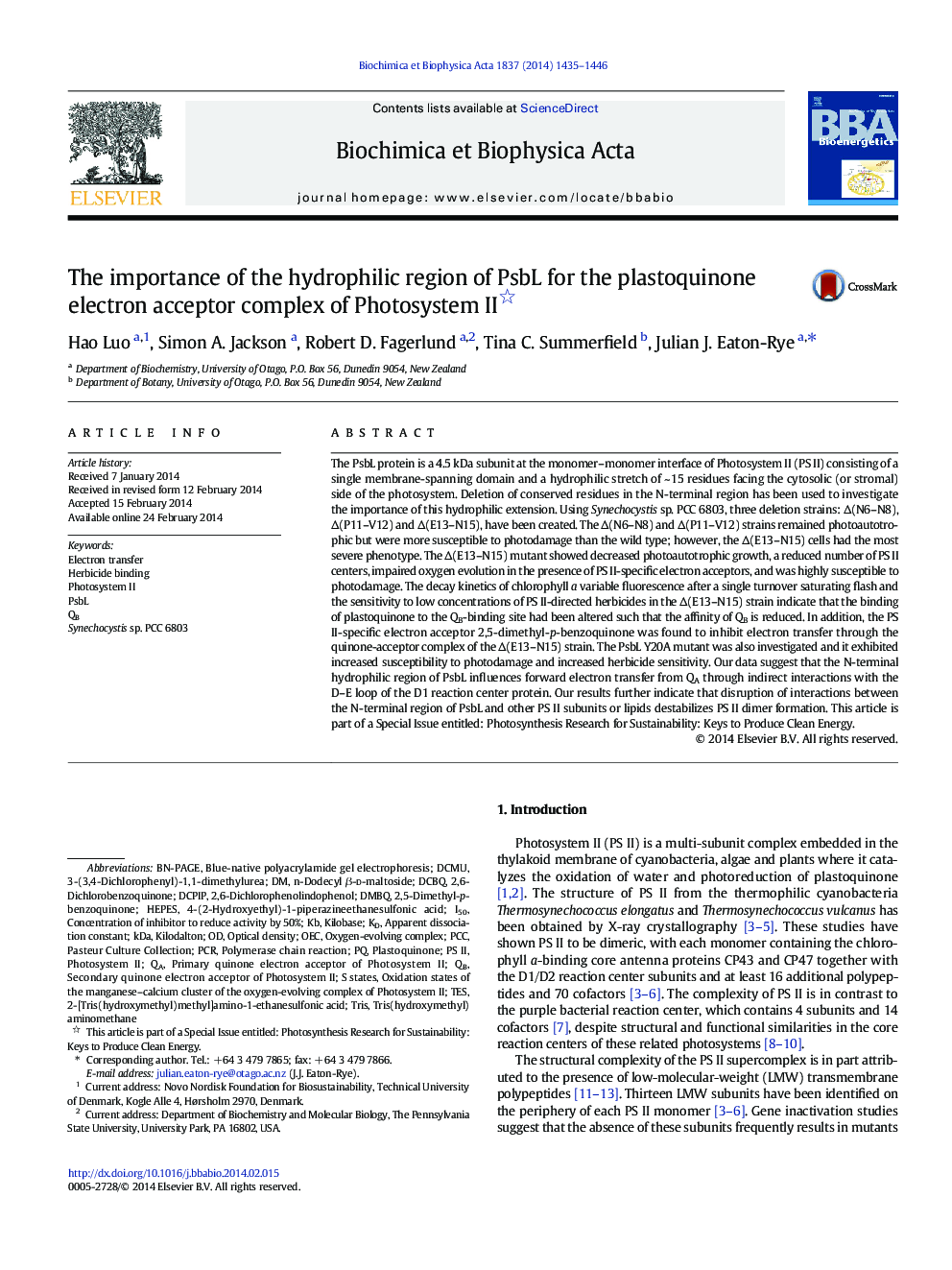| Article ID | Journal | Published Year | Pages | File Type |
|---|---|---|---|---|
| 1942167 | Biochimica et Biophysica Acta (BBA) - Bioenergetics | 2014 | 12 Pages |
Abstract
The PsbL protein is a 4.5Â kDa subunit at the monomer-monomer interface of Photosystem II (PS II) consisting of a single membrane-spanning domain and a hydrophilic stretch of ~Â 15 residues facing the cytosolic (or stromal) side of the photosystem. Deletion of conserved residues in the N-terminal region has been used to investigate the importance of this hydrophilic extension. Using Synechocystis sp. PCC 6803, three deletion strains: â(N6-N8), â(P11-V12) and â(E13-N15), have been created. The â(N6-N8) and â(P11-V12) strains remained photoautotrophic but were more susceptible to photodamage than the wild type; however, the â(E13-N15) cells had the most severe phenotype. The Î(E13-N15) mutant showed decreased photoautotrophic growth, a reduced number of PS II centers, impaired oxygen evolution in the presence of PS II-specific electron acceptors, and was highly susceptible to photodamage. The decay kinetics of chlorophyll a variable fluorescence after a single turnover saturating flash and the sensitivity to low concentrations of PS II-directed herbicides in the Î(E13-N15) strain indicate that the binding of plastoquinone to the QB-binding site had been altered such that the affinity of QB is reduced. In addition, the PS II-specific electron acceptor 2,5-dimethyl-p-benzoquinone was found to inhibit electron transfer through the quinone-acceptor complex of the â(E13-N15) strain. The PsbL Y20A mutant was also investigated and it exhibited increased susceptibility to photodamage and increased herbicide sensitivity. Our data suggest that the N-terminal hydrophilic region of PsbL influences forward electron transfer from QA through indirect interactions with the D-E loop of the D1 reaction center protein. Our results further indicate that disruption of interactions between the N-terminal region of PsbL and other PS II subunits or lipids destabilizes PS II dimer formation. This article is part of a Special Issue entitled: Photosynthesis Research for Sustainability: Keys to Produce Clean Energy.
Keywords
2,5-dimethyl-p-benzoquinonePS IIDCMUTRISBN-PAGEI50DCBQOECkiloDaltonkDaSynechocystis sp. PCC 6803TESDCPIPPCCHEPESDMBQ2,6-dichlorophenolindophenol3-(3,4-Dichlorophenyl)-1,1-dimethylurea4-(2-hydroxyethyl)-1-piperazineethanesulfonic acidn-dodecyl β-d-maltosideblue-native polyacrylamide gel electrophoresiselectron transferTris(hydroxymethyl)aminomethaneapparent dissociation constantPhotosystem IIPasteur Culture Collectionpolymerase chain reactionPCRplastoquinoneOxygen-evolving complexoptical densitykilobase
Related Topics
Life Sciences
Agricultural and Biological Sciences
Plant Science
Authors
Hao Luo, Simon A. Jackson, Robert D. Fagerlund, Tina C. Summerfield, Julian J. Eaton-Rye,
